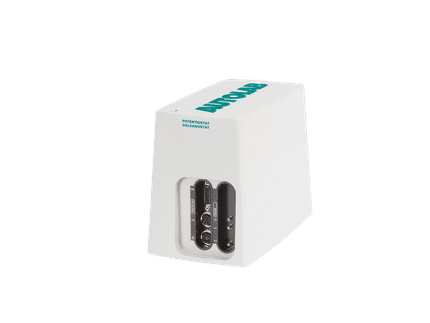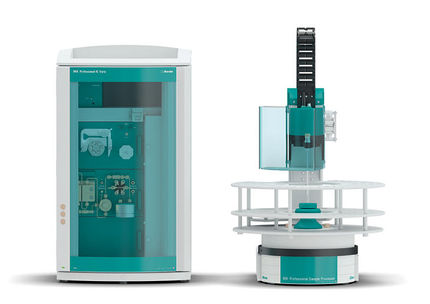Glycoproteins are proteins that contain oligosaccharide chains (glycans) covalently attached to their polypeptide. The carbohydrate is attached to the protein in a cotranslational or posttranslational modification.
In proteins that have segments extending extracellularly, the extracellular segments are often glycosylated.
N-glycosylation and O-glycosylation
There are two types of glycosylation:
Monosaccharides
Monosaccharides commonly found in eukaryotic glycoproteins include:[2]
The sugar group(s) can assist in protein folding or improve proteins' stability.
Examples
One example of glycoproteins found in the body are mucins, which are secreted in the mucus of the respiratory and digestive tracts. The sugars attached to mucins give them considerable water-holding capacity and also make them resistant to proteolysis by digestive enzymes.
Glycoproteins are important for white blood cell recognition, especially in mammals.[citation needed] Examples of glycoproteins in the immune system are:
- molecules such as antibodies (immunoglobulins), which interact directly with antigens
- molecules of the major histocompatibility complex (or MHC), which are expressed on the surface of cells and interact with T cells as part of the adaptive immune response.
Other examples of glycoproteins include:
- components of the zona pellucida, which surrounds the oocyte, and is important for sperm-egg interaction.
- structural glycoproteins, which occur in connective tissue. These help bind together the fibers, cells, and ground substance of connective tissue. They may also help components of the tissue bind to inorganic substances, such as calcium in bone.
Soluble glycoproteins often show a high viscosity, for example, in egg white and blood plasma.
Hormones
Hormones that are glycoproteins include:
Functions
Some functions served by glycoproteins[3]
| Function
| Glycoproteins
|
| Structural molecule
| Collagens
|
| Lubricant and protective agent
| Mucins
|
| Transport molecule
| Transferrin, ceruloplasmin
|
| Immunologic molecule
| Immunoglobins, histocompatibility antigens
|
| Hormone
| Chorionoic gonadotropin, thyroid-stimulating hormone (TSH)
|
| Enzyme
| Various, eg, alkaline phosphatase
|
| Cell attachment-recognition site
| Various proteins involved in cell-cell (eg, sperm-oocyte), virus-cell, bacterium-cell, and hormone cell interactions
|
| Antifreeze
| Certain plasma proteins of coldwater fish
|
| Interact with specific carbohydrates
| Lectins, selectins (cell adhesion lectins), antibodies
|
| Receptor
| Various proteins involved in hormone and drug action
|
| Affect folding of certain proteins
| Calnexin, calreticulin
|
| Regulation of development
| Notch and its analogs, key proteins in development
|
| Hemostasis (and thrombosis)
| Specific glycoproteins on the surface membranes of platelets
|
Analysis
A variety of methods used in detection, purification, and structural analysis of glycoproteins are[4]
Some important methods used to study glycoproteins
| Method
| Use
|
| Periodic acid-Schiff stain
| Detects glycoproteins as pink bands after electrophoretic separation.
|
| Incubation of cultured cells with glycoproteins as radioactive decay bands
| Leads to detection of a radioactive sugar after electrophoretic separation.
|
| Treatment with appropriate endo- or exoglycosidase or phospholipases
| Resultant shifts in electrophoretic migration help distinguish among proteins with N-glycan, O-glycan, or GPI linkages and also between high mannose and complex N-glycans.
|
| Sepharose-lectin column chromatography
| To purify glycoproteins or glycopeptides that bind the particular lectin used.
|
| Compositional analysis following acid hydrolysis
| Identifies sugars that the glycoprotein contains and their stoichiometry.
|
| Mass spectrometry
| Provides information on molecular mass, composition, sequence, and sometimes branching of a glycan chain.
|
| NMR spectroscopy
| To identify specific sugars, their sequence, linkages, and the anomeric nature of glycosidic chain.
|
| Methylation (linkage) analysis
| To determine linkage between sugars.
|
| Amino acid or cDNA sequencing
| Determination of amino acid sequence.
|
References
- ^ Ruddock & Molinari (2006) Journal of Cell Science 119, 4373-4380
- ^ Robert K. Murray, Daryl K. Granner & Victor W. Rodwell: "Harper's Illustrated Biochemistry 27th Ed.", p. 526, McGraw-Hill, 2006
- ^ Ibid., p. 524
- ^ Ibid., p. 525
See also
|







